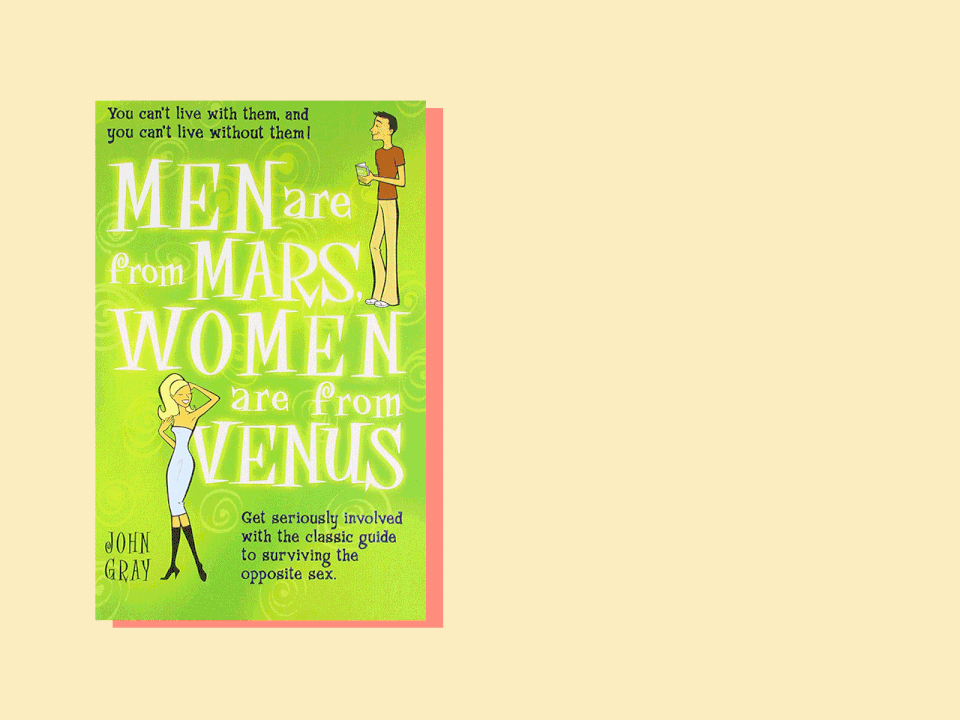I Tested ‘Love Languages’ and 3 Other Relationship Books on My Marriage

My husband likes to show me online clips of baseball replays. He also enjoys sharing aerial shots of outer space. And on occasion, he’ll run down his fantasy football scores. TBH, I’m often completely uninterested and am inclined to tell him so. NBD, right? But according to psychologist and relationship researcher John M. Gottman, Ph.D., these moments might mean more than I’d ever have thought—and turning away could be a predictor of divorce.
That’s one of the most useful and interesting things I learned when I decided to read four of the most popular relationship books on the market. I went to the library and took out Gottman’s seminal The Seven Principles for Making Marriage Work, the classic ’90s manual Men Are From Mars, Women Are From Venus, modern classic in the making The 5 Love Languages, and the hilarious if not as well known as it should be How Not to Hate Your Husband After Kids. After poring through these volumes, I got some interesting tips, asked myself some probing questions, and digested a lot of B.S. that didn’t do squat for my marriage of nearly 15 years.
Here’s how my marriage self-help experiment went.
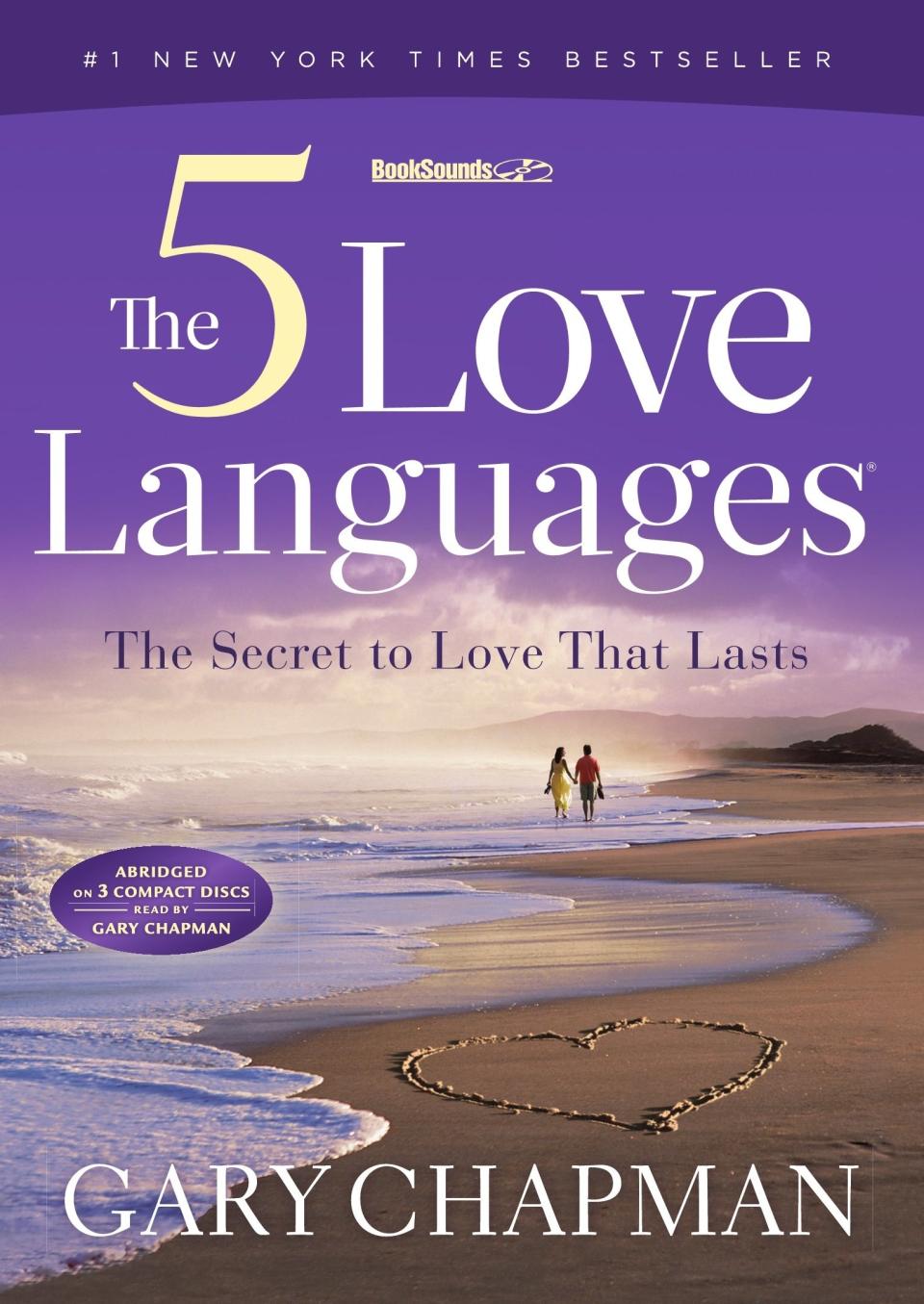
1. The 5 Love Languages by Gary Chapman
With over 11 million copies sold and eight years as a number-one New York Times bestseller, this book has become a favorite among the book-club circuit. Chapman says that after 30 years of marriage counseling, he determined that there are five emotional love languages each individual responds best to: words of affirmation, acts of service, receiving gifts, quality time, and physical touch.
It’s clear that the Love Languages paradigm is appealing to couples hoping to improve their relationship, but—to me—this book read as if Nicholas Sparks were dolling out marriage advice. I couldn’t get past the flowery language that often suggested “filling up your love tank.”
While it makes for a great-selling book, I don’t think that complex humans can so easily fit into one box. Why can’t we choose to be affirmed and value physical touch and desire a fancy gift on occasion? I couldn’t pinpoint a box for Nate or myself, which made the whole premise fall flat off the bat.
That said, I appreciated that Chapman’s advice really boils down to listening to what your partner needs to feel happy. So we basically skipped the part where you have to pick a language and have tried to put some of his lessons into practice based on instinct. For example, pulling from the advice for people who need words of affirmation, we’ve worked to practice suspending complaints and instead give compliments and expressing verbal appreciation. And Chapman’s right: The backyard gets clean faster with a compliment than a complaint. Or, as my momma says, you catch more bees with honey than vinegar.
The takeaway:
This was at best a good reminder to communicate honestly and compassionately with the one language that matters in our relationship: English.
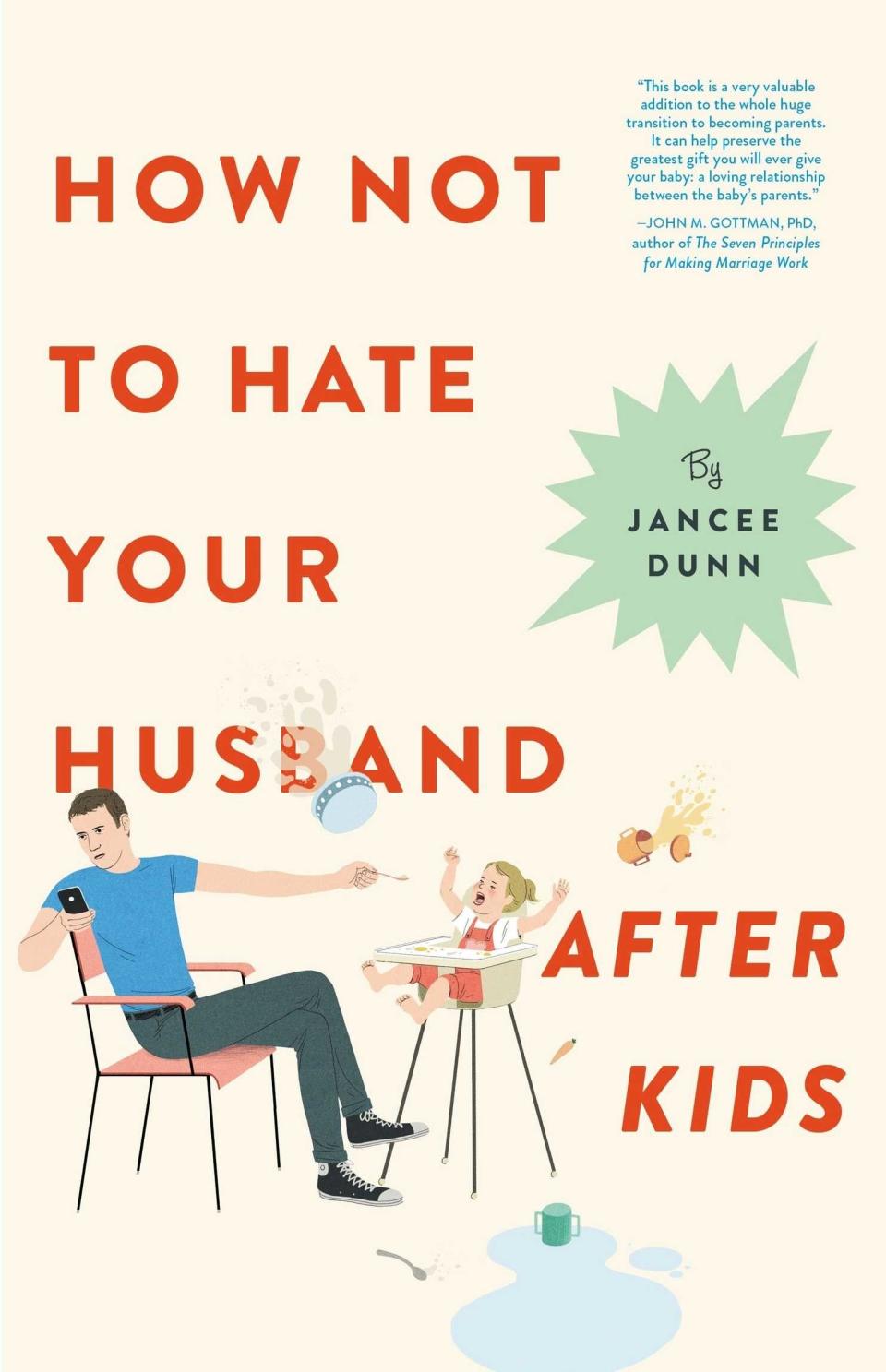
2. How Not to Hate Your Husband After Kids by Jancee Dunn
Confession: I don’t have kids and I don’t hate my husband. But the title of this book was so intriguing that I had to put it on my list. I loved Dunn’s whip-smart voice and appreciated that her solutions to problems were backed up by professional solutions and studies. Plus, as a reader, you feel totally immersed in the author’s life—as if you are going through her marriage struggles right along with her.
Some of Dunn’s problems, like feeling overwhelmed with responsibility and squabbling with her husband about chores, are not reserved for those with children; I could easily relate. We got to follow along with her page-turning experiments (like having sex every day for one week) and read about the honest outcome. Sometimes she failed and other times she succeeded, which is what marriage is all about. Reading about her marriage travails helped me and Nate identify similar patterns in our own relationship and start conversations about things—like how we eat dinner in front of the TV too often or that we tackle problems better when we’re fresh in the A.M.—that we might not have noticed or talked about otherwise.
Dunn honestly articulated how marriage can be affected by having children. (In Gottman’s research, he found that two thirds of couples underwent a precipitous drop in marital satisfaction when they became parents.) I think that while this book is marketed to parents and specifically to mothers, it’s a great read for those who might be on the fence about starting a family. While it likely wasn’t her intention, Dunn’s honesty and candor made us feel comfortable in our decision to be childfree and helpfully provided solutions to some of our own marital problems.
The takeaway:
Our problems are normal and manageable with some communication and appreciation for each other—and I’m glad we’ve chosen to be child-free.
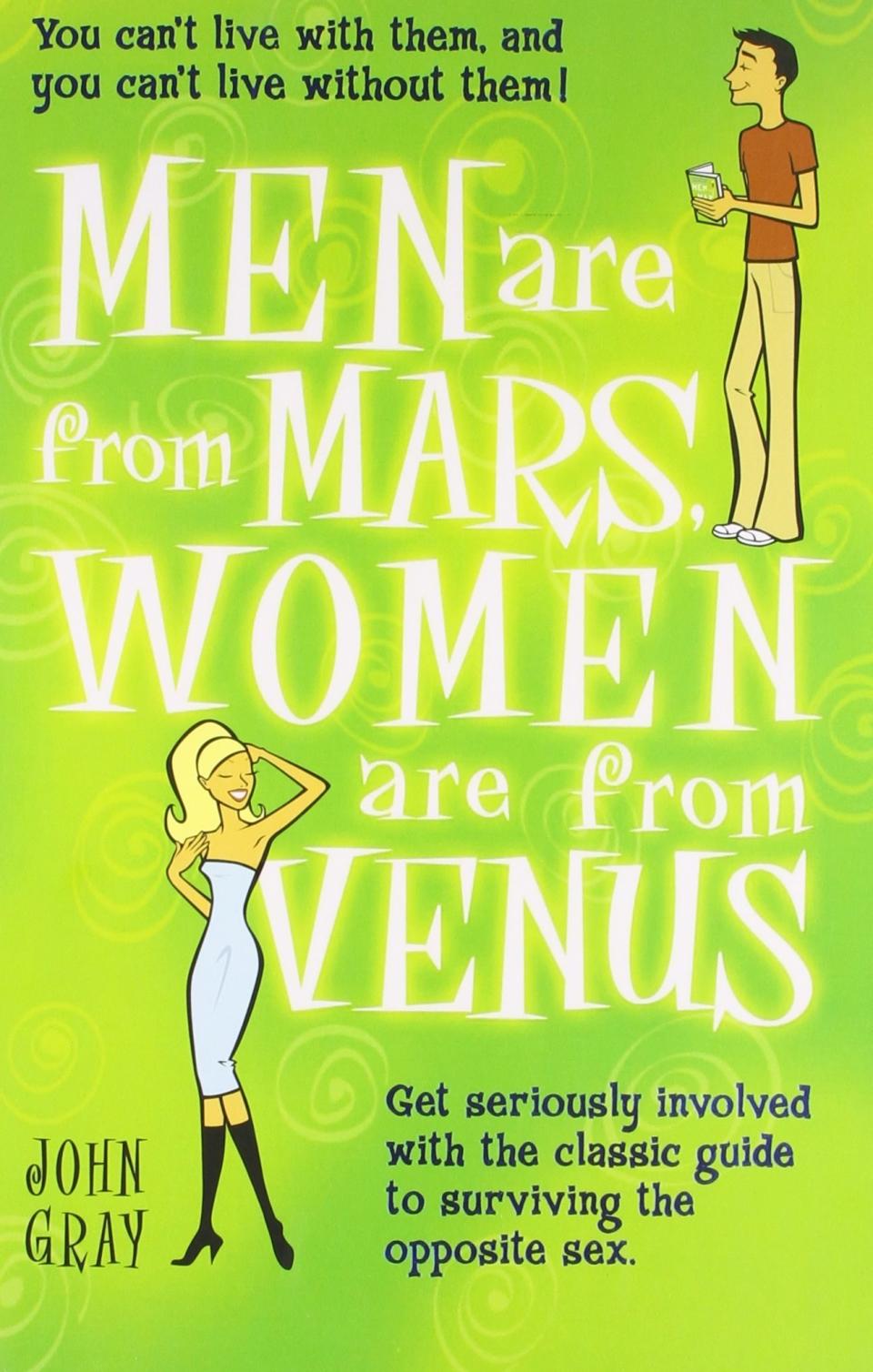
3. Men Are From Mars, Women Are From Venus by John Gray
If the wear and tear of a library book are any indication of its success, this one hits it out of the park. Men Are From Mars, Women Are From Venus was the wildly popular self-help book from the 1990s that predicated marital success on understanding the fundamental differences between the sexes. The book dishes out advice in cheeky language that describe men as Martians and women as Venusians. Twenty-seven years later, this book feels not only antiquated but sexist.
I’d put this book up there with Fifty Shades as the top of my hate-reads. In one example, Gray describes men as having the desire to problem-solve and give advice to women, while women just want to feel heard. He even states that men are more goal-oriented. In our marriage, the opposite is almost always true.
He also says that men need to let women be irrational while women need to let the men ignore this and retreat to their “caves.” As much as this book irritated both of us, it made us realize that our marriage is much more equal than would be predicted by standard gender stereotypes. And while parts of our everyday life often fall along gender norms, we’re partners and understand that being sensitive is not feminine just like my intricate to-do list is not a man’s job.
The takeaway:
Nineties fashion might be back, but there is nothing cool about this retro attitude to gender roles in relationships.
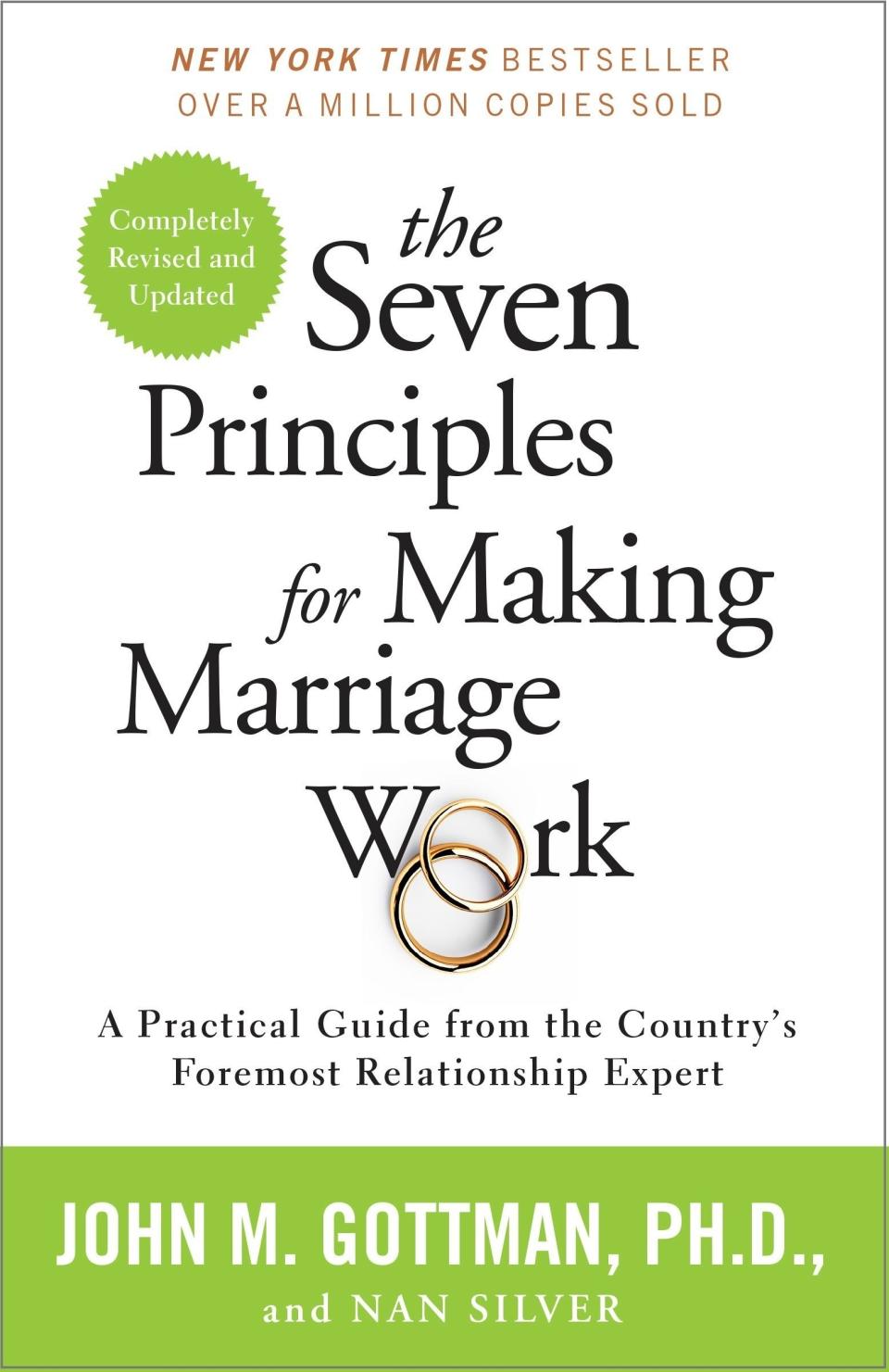
4. The Seven Principles for Making Marriage Work by John M. Gottman, Ph.D.
If there’s a relationship bible, this would be it—and for good reason. The Seven Principles for Making Marriage Work has provided a blueprint for successful relationships and been adopted by countless therapists for years. Gottman has studied couples in his “love lab” at the University of Washington since 1986 and spearheaded what’s considered the most extensive and innovative research in marriage and divorce to understand why marriage is often so difficult and why some relationships click while others split.
Gottman says that what makes a marriage work is surprisingly simple and that happily married couples aren’t smarter, richer, or more psychologically astute than others. But in their day-to-day lives, they have hit upon a dynamic that keeps their negative thoughts and feeling about each other (which everyone has) from overwhelming the positives ones. He calls couples either “masters” or “disasters,” and this book is a roadmap (with great real-life examples) as to how to be the former.
When Nate is trying to get me to pay attention to his boring boy stuff on the Internet, he’s putting forth what Gottman refers to as a “bid”—a sign of needing interest and support. In his book, Gottman uses this example: A husband casually says to his wife, “Look at that beautiful bird outside!” The wife, who perhaps is reading a page-turning novel (or marriage book?!), has the choice to “turn toward” her husband and go to the window or “turn away” and ignore him. While this bird-bid may not seem like a big deal, it can reveal whether the couple is in mastery territory or heading for the big D.
One paradigm that really stuck with us was the “repair attempt.” In the book, a happily married couple was having a fight, and in the middle of the argument, the wife playfully put her hands on her hips and stuck her out tongue to mimic their child, causing them both to pause and laugh. Gottman says that this action—silly or otherwise—prevents negativity from escalating out of control and is a secret weapon of emotionally intelligent couples. It can be difficult to be silly amid a heated discussion, but we’re learning that a funny armpit fart noise or even a time-out really helps to diffuse an argument.
Another favorite example was called “fanning the flames,” which sounds hokey, but simply boils down to acknowledging positive aspects of your partner. Since reading this book, we’re not afraid to thank each other for anything and everything. In fact, it may seem like we’re going overboard, but I love when Nate thanks me for cooking dinner (and complimenting something I’ve made a million times) and he appreciates when I noticed he’s taken out the garbage or walked the dog when I have a deadline.
The takeaway:
There are so many valuable real-life lessons that resonated with us in this book (we even bought the workbooks after reading it!) and a lot of it boiled down to being kind, which anyone is capable of doing.
Anne Roderique-Jones is a freelance writer and editor whose work has appeared in Vogue, Marie Claire, Southern Living, Town & Country, and Condé Nast Traveler. Twitter: @AnnieMarie_ Instagram: @AnnieMarie_
